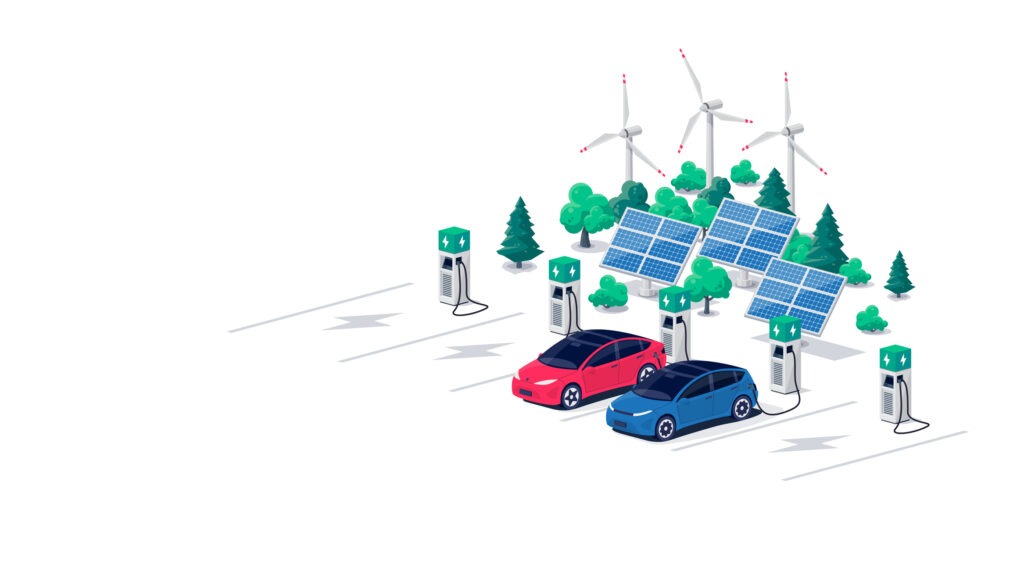What does the EU’s green technology push mean for the automotive industry?
22 March 2023

The EU recently unveiled a set of measures to secure the supply of critical raw materials and establish manufacturing capacities of green technologies. Autovista24 journalist Rebeka Shaid, considers the questions that remain.
For carmakers developing and building electric vehicles (EVs), access to rare earth materials and key components remains vital. The EU has recognised the need to keep its industries competitive or risk falling behind countries like China and the US. Analysts warn that Europe is increasingly lagging behind in the international race for raw materials and clean technologies.
As elements of the Green Deal Industrial Plan, both the Critical Raw Materials Act (CRMA) and the Net-Zero Industry Act (NZIA) hope to change that. Recently presented by the EU, these acts seek to provide additional electrification opportunities, offering a legal framework for European industries.
Critical raw materials
The CRMA focuses on EU mining, as well as the refining and recycling of critical raw materials to improve the circular economy. One of its main endeavours is to brace European industries from further disruption after the COVID-19 pandemic and the outbreak of war in Ukraine caused supply-chain upheaval.
Demand for critical raw materials has never been higher. For example, the EU’s need for lithium is expected to increase 12-fold by 2030. The metal is used in EV batteries and like others, it plays a pivotal role in the transition to cleaner technologies.
Politicians in Brussels want to make Europe less dependent on imported raw materials by diversifying domestic supply. The Commission highlighted that in many cases more than 90% of EU supply comes from a single third country, with China a key player in the market.
To put Europe’s current dependence into perspective: 97% of the EU’s magnesium is sourced from China. South Africa covers 71% of the region’s needs for platinum group metals while Türkiye provides 98% of the EU’s borate – all key components in automotive parts.
Eager to lessen this reliance on other markets, the EU has made it clear that no more than 65% of the bloc’s annual use of any raw material should come from a single third country by 2030.
However, the bloc acknowledged the difficulty of complete self-sufficiency and will continue to rely on imports for a majority of its consumption. This is why politicians want to expand a network of raw materials partnerships and free trade agreements, as well as establishing a ‘Critical Raw Materials Club.’
‘Solar panels, heat pumps, electric cars, chips, pharmaceuticals, ammunition: raw materials are essential to technologies and products of strategic importance,’ said Thierry Breton, EU Commissioner for Internal Market.
‘Demand for these precious and scarce resources is increasing sharply. With this act, the EU is upping its game in terms of extracting, refining, recycling and diversifying to ensure secure and sustainable access to critical raw materials,’ he added.
Meanwhile, carmakers remain under pressure to gain greater control of the raw materials supply chain. According to Reuters, Volkswagen intends to invest directly in mines to cut down battery costs and meet half of its own demand – plans the carmaker declined to comment on when approached by Autovista24.
Net-zero technologies
Europe wants to be the first climate-neutral continent and to achieve this, it needs to ramp up the production of net-zero technologies. This ranges from wind turbines to solar panels and renewable hydrogen.
The NZIA aims to increase access to finance for clean technologies, such as batteries, fuel cells, geothermal energy, and grid technologies. The act looks to foster an environment that makes it easier to set up net-zero projects in Europe and attract investments.
The EU is following ambitious targets to develop more ‘made in Europe’ goods, aiming to manufacture at least 40% of the products it needs for net-zero technologies by 2030. There is also interest in turning the continent into a hydrogen hub, with pilot auctions on renewable hydrogen production expected to launch later this year.
Both acts will have to be approved by the European Parliament and the Council before coming into force. While these measures have largely been welcomed by many businesses, car manufacturers included, some industry bodies have raised concerns.
Not ambitious?
The European Automobile Manufacturers’ Association (ACEA) said the NZIA’s identification of batteries as a priority sector is a positive development. This will help improve investments in net-zero technologies, giving priority to strategic projects in the sector.
But ACEA also warned of significant uncertainties as to how effective certain elements of the proposal will be. Regarding the CRMA, it said more needs to be done to create a raw materials club, suggesting a collaboration with the US to bring the concept to life.
‘ACEA broadly welcomes the European Commission’s proposals for a Net-Zero Industry Act and a Critical Raw Materials Act. However, many questions remain, particularly regarding their potential effectiveness and their overall coherence with Europe’s Green Deal plans,’ the industry body said.
Germany’s influential automotive association, the VDA, argued the CRMA falls short of expectations and needs. VDA president Hildegard Müller said the proposal ignores demands for a European agency capable of covering strategic raw materials projects that could bolster supply.
‘Direct financial support at EU level in the form of tax credits or direct subsidies is also not planned for the strategic raw material projects. Instead, member states are asked to support strategic projects with financing,’ Müller said. She commented that this could lead to ‘wrong’ competition among EU countries.
Unrealistic targets and concerns
While the EU is hoping to become a green-technology frontrunner, some of the targets set in the recent proposals remain voluntary. Therefore, they are not legally binding, meaning certain goals are unlikely to be met.
Some analysts believe the recent proposals are not ambitious enough, while others have voiced concern. Criticism has come from green politicians and NGOs, worried that both acts could cause unnecessary damage to nature and biodiversity, especially when mining is involved.
Green Party MEP Henrike Hahn cautioned that a blind call for more mining is out of place and must remain a taboo in protected areas. Several mining projects in Europe have come under fire as public opposition remains high. Last year, Serbia terminated Rio Tinto’s multi-billion lithium project in the country, following weeks of protests.
Environmental organisation WWF also said the European Commission does not distinguish ‘between activities that are environmentally harmful and/or unproven at scale and those that are clean and in need, of rapid scaling up.’ The group criticised that politicians have not sufficiently considered material and energy efficiency.
Regarding the CRMA, Tobias Kind-Rieper, global lead mining and metals at WWF, said: ‘having a target of at least 40% of raw materials being processed and refined within the EU is unrealistic and would also be an obstruction in raw materials negotiation with partner countries.’



